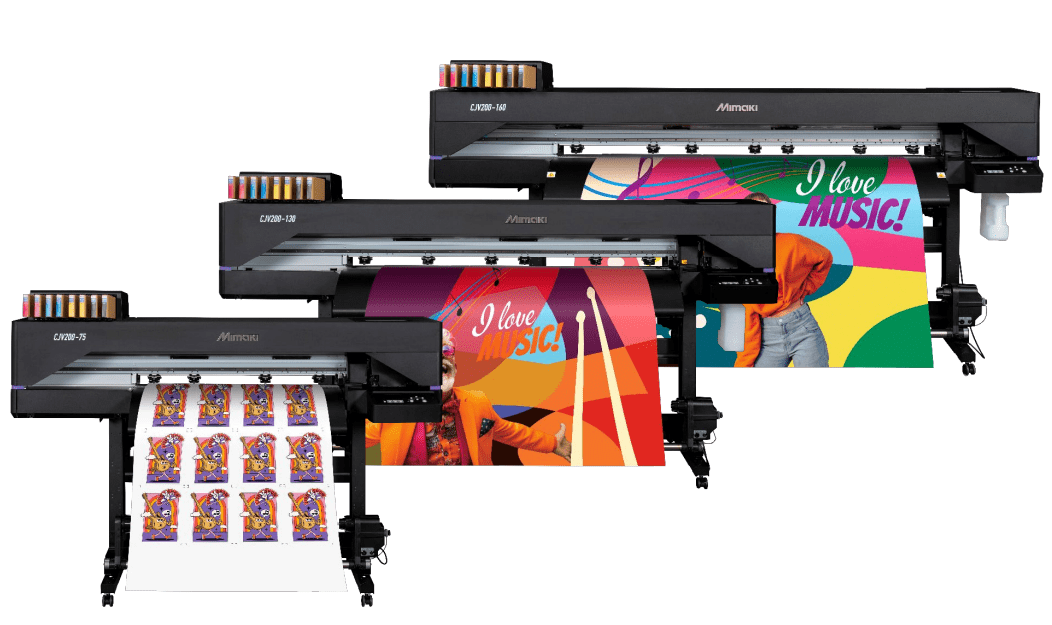Every print business needs customers. But how do you win them? How do you keep winning them? And once they’re onboard, how do you retain them?
Table of Contents
- 1. The state of the UK print industry
- 2. Why customer retention is just as important as winning new customers
- 3. The power of customer service
- 4. How to win new custom and grow your print business
- Talk to Soyang
1. The state of the UK print industry
…(and why it’s more important than ever to stay focused on winning business from new and existing customers).
According to one industry reporting specialist, the UK currently has almost 9,000 print companies. That amounts to a decline of around 10% over the past decade. The good news, a pandemic-influenced blip aside, is that the decline has been far slower over the past five years than in the five that preceded it.
Despite predictions of an entirely digital world, industry still needs print, and while digital continues to nibble at the edges of print’s market, the need for printed products doesn’t look set to change in any significant way anytime soon.
Yet there remains a feeling of unease. Inflation has made life harder for every business and the print sector is no exception. As Printweek reported in early 2023, “The print industry has been particularly badly hit by a combination of paper, energy and labour cost increases.”
If the feeling is that the sector is through the worst of current upheavals, there remains wariness that something else is probably just around the corner.
For any print business, that makes keeping pace with or staying ahead of the competition more important than it has ever been. That also means it is more important than ever to ensure that your business is able to keep hold of its existing customers while acquiring new ones.
2. Why customer retention is just as important as winning new customers
How do you calculate the customer retention rate in your print shop? Why do so many printing companies pay greater attention to customer acquisition than retention? And why might that not be the wisest strategy for your business?
Winning new business matters. Of course it does. If your print company never collected any new customers you’d a) never have survived more than a month and b) find life getting much harder when some customers eventually closed shop, retired or decided to work with a competitor.
Winning new business is vitally important to the long-term health of a business, and we explore strategies for bringing new business on board below. But we’d argue it’s not quite as important as retaining the customers you already have.
The data vary depending on the sources you choose, but what’s unequivocal is that:
- Acquiring new customers costs more money than retaining existing ones, because you (usually) have to go out and attract them, and that costs money.
- More than half (and as much as two thirds) of the average print company’s business comes from existing customers.
- The likelihood of selling to an existing customer is vastly greater than your chances of selling to a new prospect.
- Loyal customers spend much more than new ones.
If you run a printing business, you’ll intuitively know all the above are true – you’ll see it every day. And yet, it’s also true that:
- More print organisations focus on customer acquisition than retention.
- Customer retention rates for some print businesses are low – sometimes as low as 25%.
How to calculate a customer retention rate
You’ll naturally have an idea of the balance between new and repeat business in your print company – but it’s worth understanding the actual picture. To calculate your customer retention rate for a given period:
- Take the total number of customers on your books at the end of a period (month, financial year etc).
- Subtract the number of new customers who arrived in that same period.
- Divide the result by the number of customers on your books at the start of the period.
- Multiply by 100 to get the % retention rate.
Why do companies place so much focus on new customers?
The conventional wisdom is that your print business won’t grow with the customers it already has because there’s a limit to how much more business an existing customer will ever put your way. For real growth, you need new customers to add to the pot of existing business.
It may be true that there’s a limit to the volume of printing a company can require of its print partner, but as McKinsey (among many others) notes, few companies are close to that limit.
‘Experience led growth’ is McKinsey’s term for growing profit by improving the experience of existing customers. It’s a new term for an old-fashioned concept that puts customer service at the heart of what you do. Or, as they put it, “shut up and listen to your customers’.
If, having calculated your own customer retention rate, you find it is low, it’s worth exploring ways to improve it, because doing so will almost invariably be quicker, cheaper and more effective than focusing solely on winning new customers.
3. The power of customer service
Why it’s how you do it, rather than what you do, that makes all the difference in print.
Your print business may achieve spectacular results. The most reliable print materials. The most vivid reproductions. The most durable banners, posters and wraps.
Every printer, however, faces the cold reality that lots of other printers can deliver a similar level of capability. True, you may specialise in vehicle wraps or window films when a competitor doesn’t, but in general, every printer should be able to complete jobs with a good degree of technical proficiency.
It’s what every customer expects of a printer, so it’s hard to make that your unique selling point (unless you really do offer some level of print capability far beyond anything your competitors are capable of).
So if the printing doesn’t set you apart, what will? The difference is always service.
Why service is how you differentiate
According to our 2023 Print Industry Report, 38.5% of print leaders believe service is the most important route to generating business (the joint highest response, tying with building relationships).
With service, you set the standards for your own print business, and there are a number of levers you can pull to ensure your service stands out. These include:
- Delivery speed: This isn’t necessarily a case of delivering a printed product at light speed. After all, many print companies offer a swift service. What matters more is setting a competitive deadline and meeting it.
- Communication: Good communication is important in every business, but it remains the case that many businesses struggle to make things clear for customers, or simply keep them updated. Communication remains one of the simplest, most powerful service differentiators.
- Knowledge: How do I….? What’s the best way to…? If I use print material A rather than print material B, what difference will it make to…? A big part of the service you offer is the knowledge you hold and your ability to share it. When a customer relies on you for your print advice, they’re likely to rely on you for their printing too.
- Resolving issues: Everything’s easy when things are going well. It’s when you hit snags that standards of service really get tested. When the print project doesn’t arrive on time. When you’ve misunderstood part of the customer’s requirements. When a product has been damaged during shipping, how you respond can determine whether a customer will use you again. A problem that gets resolved successfully can be a major factor in driving customer retention and recommendations.
- Relationship building: Which we explore in greater detail below.
Print customer service leads to referrals
According to PwC, 59% of customers will give up on a company after several bad experiences. 17% will walk away after just one bad experience.
In contrast, and according to a Nielsen study, 92% of consumers will rely on a recommendation or a referral far more than any marketing activity and 70% will trust online opinions.
Good service leads to greater retention. More retained customers will create a larger pool of people who are more likely to recommend you. That in turn leads to more new customers.
Find out more about how to deliver exceptional customer service in printing
4. How to win new custom and grow your print business
From networking to partnerships to targeted advertising, there are plenty of ways to bring new customers to your business.
Service may be the crucial factor in retaining or winning print business, but it’s far from the only way to grow your company.
A. Networking & Building Relationships
When the Soyang 2023 Print Industry Report surveyed print leaders about their most effective route to generating new business, networking and building relationships was the joint-top response, at 38.5% (tying with delivering excellent customer service).
There’s a clear crossover between service and building relationships – it’s far easier to build a relationship based on the trust and goodwill that comes from having already delivered good service. Yet there’s more to relationships than service.
Getting involved in industry networking events is a powerful way of increasing your business’ reach and relationships. Of the organisations we surveyed, 72% of print businesses said they use trade shows and exhibitions (as either an exhibitor, a speaker or simply as an attendee). It is, however, far from the only way to network.
Join a local business networking group: Your local Chamber of Commerce will run business groups but there will be others. Joining such a group is a slow burn that requires your regular attendance to gradually build relationships (i.e. you shouldn’t expect to leave your first meeting with a truckload of new work) but in time this can be a valuable way to win new business and then retain it.
Harness social media: Networking doesn’t have to be formal. Joining social media and playing an active role in the business community (or the wider community) can help place you at the front of mind for people looking for print services.
It is, of course, important to ensure that you’re on the same social media platform as those likely to need your services.
Related Article: Beyond the Press: Harnessing Social Media for Print Business Growth
Build your LinkedIn profile: The beauty of LinkedIn is that it enables you to network and build your reputation as a thought leader (e.g. by sharing helpful information) for free. It can take time to build a profile that makes you a natural choice of print company for your followers, but it’s often an investment worth making.
B. Partnerships With Other Print Industry Businesses
Every week, you’ll probably be carrying out work for customers in allied industries (sign making, graphic design, branding and creative etc). You’ll also probably know the leaders of other local print businesses. Both may present an opportunity for partnership.
Partner with other print businesses: Perhaps you specialise in large scale and wide format printing, while other local businesses prefer to focus on publishing or t-shirts. There’s a clear opportunity here to refer on customers who want print services you don’t offer to print companies that do. As long as your partner companies reciprocate, this can be a valuable if occasional way of bringing new business through the door.
Partner with allied businesses: Sooner or later, every digital agency, photographer and sign maker needs print services. You could treat those businesses purely as one-off customers. More likely, however, you’ll build a relationship that keeps them coming back.
Now is the opportunity to take things a step further. Informally, this could simply be a referral service as outlined above, where you point customers in need of graphic design services in the direction of your partner, and they do the same for their customers needing a printer.
Taking things a stage further, you could operate as a loose collective, coming together on projects that require your combined skills and operating separately the rest of the time.
However far you wish to take the relationship, it can be a rewarding way to ensure a continuing influx of new business.
C. Offering Print Promotions & Discounts
There’s a delicate balance to strike with discounting. Used occasionally in a targeted way it can help to attract new customers and keep existing ones loyal. Used too often or unwisely it can have unintended consequences and even drive your print customers away.
The do’s – when to consider discounts:
- Foster leads: When you have a number of ‘warm’ leads that you want to encourage to give you a try, a discount can be a decisive final nudge.
- Product pushes: Use discounts to encourage customers to try a new product or service. Suppose, for example, you switch to a subscription model of print, where customers pay a monthly fee for an agreed amount of work. Offering a discount could encourage sign-ups.
- Manage sales slumps: Promotions can drive business in traditionally slower parts of the year.
- Say thank you: An occasional discount based on loyalty or reaching a certain order number/value can make a customer feel valued and retain their business.
The don’ts – discount traps to avoid:
- Don’t offer blanket discounts or offers: There’s little point in discounting for customers who would be perfectly happy to pay the full price for your print services. Target your offers.
- Ensure discounts are time limited. Creating scarcity is an important factor in a promotional offer. An open-ended offer may never be used because it will still be there tomorrow. Creating a use-by date adds urgency.
- Don’t repeatedly offer discount: If your business builds a reputation for being a discount printer, no customer will ever buy at the full price, instead waiting for the next promotion.
- Don’t discount in peak season: You’ll needlessly damage profits and potentially overload your ability to service all your customers.
- Don’t offer discounts to customers who won’t stay with you: They’ll still leave – they’ll just do it after they’ve taken advantage of your goodwill.
- Don’t only reward new customers: Ensure you balance offers, so that you reward loyalty and big spenders too.
- Avoid price wars, where you discount 5% and a competitor offers 10%. In a race to the bottom, nobody wins. Better to build a loyal base of customers who value your print work rather than wanting it at rock bottom price.
D. Run Targeted Advertising Campaigns
Word of mouth may be the most reliable and valuable way of building new business, but if you’re launching a new print company, you may not yet have the customers to recommend you.
Even if you have a healthy supply of referrals, once your print business reaches a certain scale, you’ll need to supplement those with new customers brought in via targeted print marketing.
There are numerous ways to achieve this, and you can use any or all of them, often at the same time.
Advertising approaches include:
- Email campaigns: A great way to stay in touch with current and lapsed clients – and a valuable tool for promoting new services or offering the occasional discount.
- Direct mail campaigns: A more expensive way of contacting your customers, but if you target only high value customers, using a direct mail campaign has the added benefit of showing what you’re capable of.
- Google Ads: A Google Ads campaign targets people searching for certain specific print shop-related phrases online. You set a spend limit, then, each time a customer makes a search using key words and phrases you select, your business will be returned in the sponsored listings towards the top of the page, where more potential customers will see it.
- Social media ads: Another form of online ad, like Google ads, but your business will appear in prospects’ social feeds rather than on Google pages.
- Radio: A lesser used option but if, for example, your business works with trades in a certain geographic area and those trades are likely to have local radio playing constantly, you could boost your profile through radio advertising.
Find out more about running targeted advertising campaigns
Talk to Soyang
When so much of the print company/customer relationship is based on experience, Soyang’s print materials, swift delivery and trusted expertise can help you create better experiences. To explore how, talk to us.










